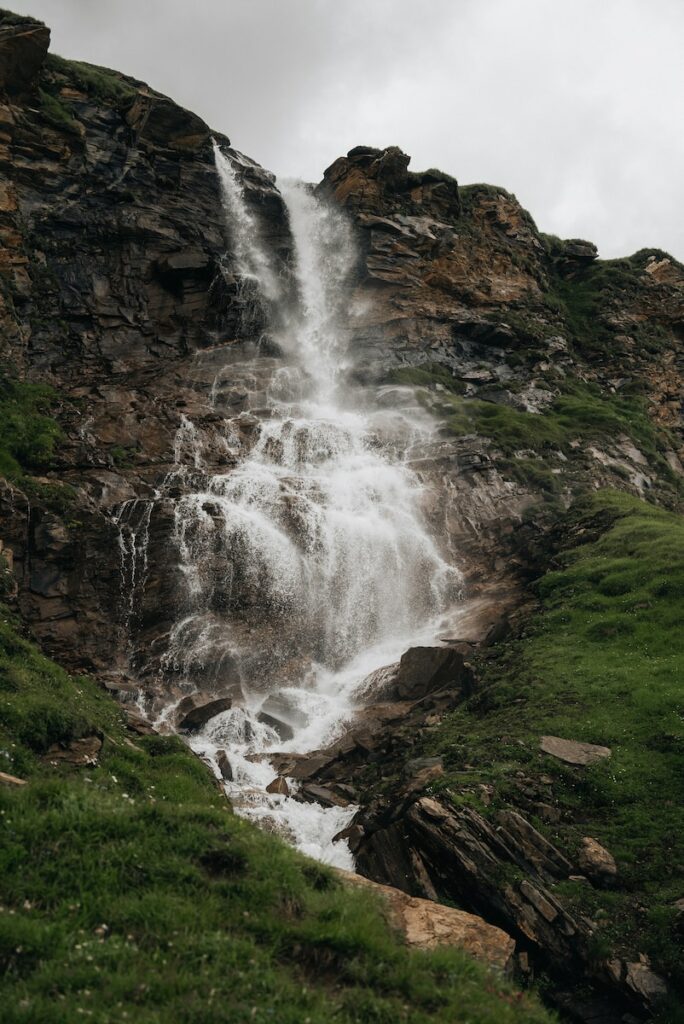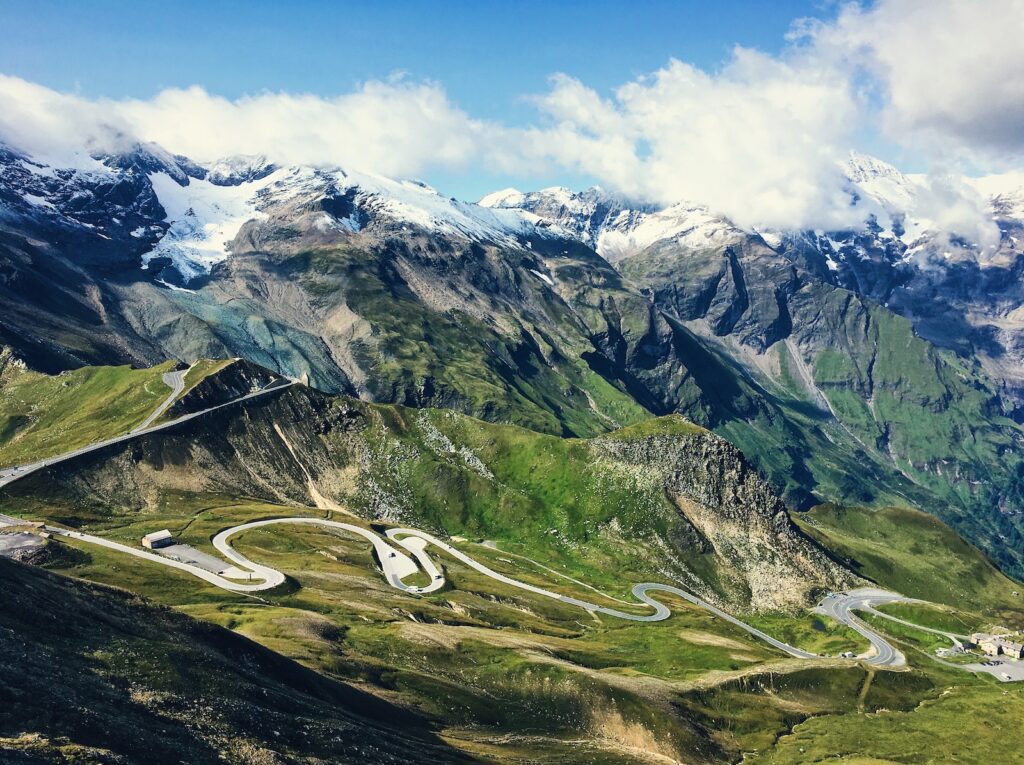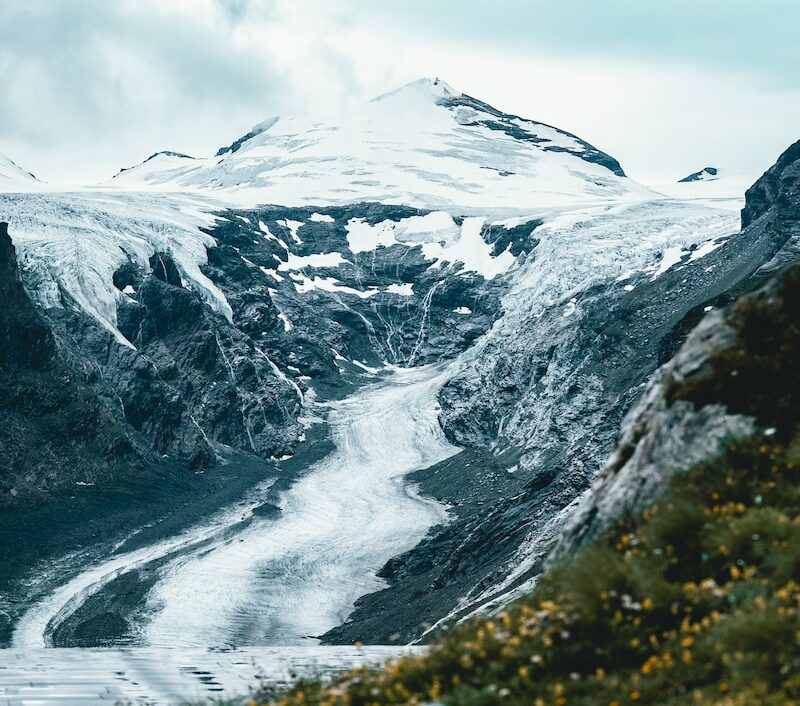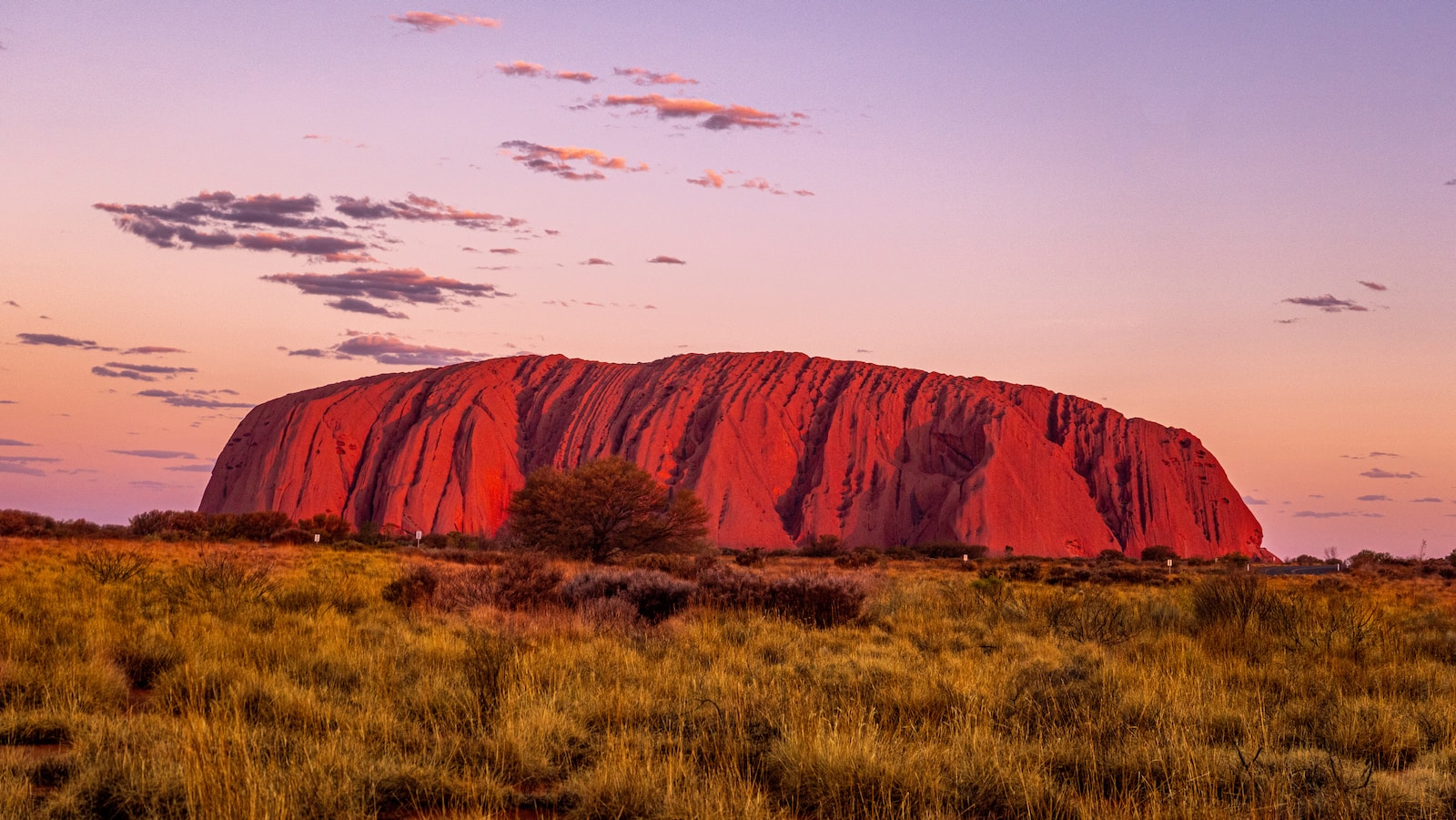Welcome to Grossglockner: Austria’s Majestic Crown, a blog showcasing the breathtaking beauty of Austria’s highest peak. Get ready to embark on a visual journey as we explore the stunning landscape of the Grossglockner, capturing its glacial fields, enchanting alpine flowers, and captivating alpine scenes. Whether you’re a landscape photography enthusiast or simply a nature lover, this blog promises to immerse you in the grandeur and splendor of this majestic mountain. So grab your camera and let’s dive into the beauty that awaits!
Table of Contents
- Photographing Grossglockner: Austria’s Majestic Crown
- Grossglockner: Austria’s Majestic Crown
- Capturing the Majestic Crown of Austria: Grossglockner
- Frequently Asked Questions
- 1. Where is Grossglockner located?
- 2. How do I get to Grossglockner?
- 3. What is the best time to visit Grossglockner for landscape photography?
- 4. Are there any photography restrictions at Grossglockner?
- 5. Are there any photography tours or workshops available at Grossglockner?
- 6. Can I hike to the summit of Grossglockner?
- 7. What camera equipment is recommended for photographing Grossglockner?
- 8. Are there any accommodations near Grossglockner?
- 9. Are there any safety precautions I should take while visiting Grossglockner?
- 10. Are there any other picturesque locations near Grossglockner worth exploring?
- Wrap Up
Photographing Grossglockner: Austria’s Majestic Crown
When it comes to landscape photography, few places compare to the majestic beauty of Grossglockner in the Austrian Alps. With its towering peaks, glacial fields, and breathtaking alpine scenes, it offers a treasure trove of photographic opportunities. In this blog, we will explore the stunning features of Grossglockner and discuss techniques to capture its grandeur in your photographs.
1. Glacial Fields:
At the heart of Grossglockner lies an extensive network of glacial fields that create an awe-inspiring landscape. These icy wonders provide a dramatic contrast against the rugged mountain peaks. To capture the essence of the glacial fields, consider using a wide-angle lens to emphasize their vastness and a polarizing filter to reduce reflections and enhance the blue hues of the ice. Play with different perspectives, such as shooting from a low angle to accentuate the grandeur.
In addition, focus on the intricate patterns and textures present in the ice formations. Get up close to capture the intricate details, like the cracks and crevices, that tell the story of the glacier’s history. Experiment with different lighting conditions, whether it’s the soft morning light illuminating the ice or the warm hues of sunset casting a golden glow on the glaciers.
The Grossglockner High Alpine Road, which leads to the majestic peak, is Austria's highest paved road and one of the most beautiful scenic drives in the entire world. With its hairpin turns, breathtaking views, and alpine landscapes, it offers an unforgettable experience for nature lovers and photography enthusiasts.
2. Alpine Flowers and Wildlife:
Grossglockner is not only known for its towering peaks but also for its vibrant alpine meadows dotted with colorful flowers. From delicate edelweiss to vibrant gentians, these flowers add a touch of beauty and charm to the already breathtaking scenery. When photographing alpine flowers, pay attention to the composition and framing. Consider using a macro lens to capture the intricate details of each petal or experiment with selective focus to make the flowers stand out against the blurred background.
While exploring the alpine meadows, keep an eye out for the wildlife that calls Grossglockner home. Majestic ibex, chamois, and marmots are just a few of the many animals you may encounter. Capture their wild and untamed spirit by using a telephoto lens to bring out their details while maintaining a safe distance.
It’s important to be patient and observant when photographing wildlife. Wait for the right moment, such as a bird in mid-flight or a deer peering through the trees, to add a captivating element to your images. Remember to respect their natural habitat and keep a safe distance to avoid disturbing their behavior.
Whether you’re photographing the glacial fields or the vibrant alpine meadows, Grossglockner offers endless opportunities for landscape photography. Don’t be afraid to explore different angles, experiment with lighting, and capture the magic of this majestic crown of Austria. With the right techniques and a keen eye, you can create stunning photographs that truly reflect the grandeur of Grossglockner.

Grossglockner: Austria’s Majestic Crown
Are you ready to capture the awe-inspiring beauty of Grossglockner, Austria’s highest peak? To ensure you achieve stunning landscape photographs, don’t overlook the importance of using the right camera, lenses, and other equipment. In this section, we’ll guide you through the best options and explain their benefits.
The Perfect Camera for Alpine Scenes
When photographing landscapes, it’s crucial to have a camera that can capture the intricate details and vastness of the scene. One excellent option for capturing Grossglockner’s majesty is the Nikon D850. With its high-resolution 45.7-megapixel sensor and impressive dynamic range, it allows you to capture every nuance of the Alpine landscape. The D850 also boasts a fast autofocus system, essential for capturing sharp images of moving clouds or alpine wildlife.
If you prefer Canon, the Canon EOS 5D Mark IV is a reliable alternative. It features a 30.4-megapixel sensor and the famous Canon color science, which produces vibrant and lifelike images. The 5D Mark IV also has excellent low-light capabilities, allowing you to capture breathtaking sunrise or sunset shots.
Choosing the Right Lenses for Grossglockner
Pairing your camera with the right lenses is crucial for capturing the beauty of Grossglockner. For wide-angle landscapes, the Nikon AF-S Nikkor 14-24mm f/2.8G ED lens is a fantastic choice. Its wide focal range and fast aperture allow you to capture sweeping shots of the glacial fields and snow-capped peaks, while maintaining exceptional sharpness and clarity throughout the frame.
If you prefer a Canon lens, the Canon EF 16-35mm f/2.8L III USM lens is an excellent option. With its wide focal length range and fast aperture, it enables you to capture the grandeur of Grossglockner with exceptional detail and clarity. The lens also features Canon’s high-quality optics, ensuring optimum image quality.
For photographers interested in capturing intricate details or alpine flowers, a macro lens is a must-have. The Sigma 105mm f/2.8 EX DG OS HSM Macro lens offers exceptional image quality and a wide aperture, making it perfect for capturing close-up shots of flowers or intricate ice formations. Its optical stabilization feature also helps with handheld shooting, allowing you to capture sharp images even in challenging conditions.
Remember, these are just a few examples of cameras and lenses that work well for photographing Grossglockner. Depending on your personal preferences and budget, there are many other excellent options available. It’s always a good idea to research and test different equipment to find the perfect setup that suits your unique style and needs.

Capturing the Majestic Crown of Austria: Grossglockner
The Grossglockner is not only Austria’s highest peak but also a crown jewel for landscape photographers. Its breathtaking beauty attracts photographers from around the world who seek to capture its grandeur. To help you make the most of your photography journey, this section will guide you through the best time of year to take photos and the optimal vantage points and positions to capture the mountain in all its glory.
The Best Time of Year to Photograph Grossglockner
The Grossglockner offers stunning photographic opportunities year-round, but choosing the right season can make a significant difference in the quality and mood of your photos. Here are the best times to capture this majestic peak:
- Spring: As the snow begins to melt, spring brings a vibrant burst of colors to the surrounding alpine meadows. The contrast between the lush green landscape and the snow-capped peak creates a captivating composition.
- Summer: The summer months provide longer days, allowing for extended golden hour opportunities and increased chances of dramatic lighting. The warm weather also brings out a variety of alpine flowers, adding vibrant pops of color to your photographs.
- Autumn: Fall is a magical time in the Alps, as the foliage changes to brilliant shades of red, orange, and yellow. The contrast between the colorful landscape and the snow-covered peaks is simply awe-inspiring.
- Winter: For photographers seeking a truly dramatic and ethereal atmosphere, winter is the time to go. The snow-draped peaks and frozen landscapes create a surreal and mesmerizing scene.
Choosing the Best Vantage Points and Positions
To capture the essence of Grossglockner, it’s essential to find the perfect vantage points and positions that showcase its magnificence. Here are three options to consider:
- Franz-Josefs-Höhe: Located at an elevation of 2,369 meters, Franz-Josefs-Höhe provides a panoramic view of Grossglockner and the surrounding mountain range. From here, you can capture stunning wide-angle shots that showcase the vastness of the landscape.
- Pasterze Glacier Viewpoint: For a unique perspective, head to the Pasterze Glacier Viewpoint. This spot offers a closer look at the glacier, allowing you to emphasize the scale and textures of the icy terrain in your photographs.
- Edelweißspitze: For those willing to venture higher, Edelweißspitze is a must-visit location. At an elevation of 2,571 meters, it offers a breathtaking 360-degree view of the surrounding peaks and valleys. From here, you can capture the majestic Grossglockner from a bird’s-eye perspective.
Remember, the best vantage point can vary depending on weather conditions and the specific mood you want to convey in your photos. Be sure to explore different angles and experiment with various compositions to find your unique vision of Grossglockner.
For capturing the majestic landscapes of Grossglockner, use a wide-angle lens to capture the vast expanse and depth of the Alps. This will allow you to include both the foreground and the expansive mountain range in your compositions, creating stunning and immersive images.
Frequently Asked Questions
1. Where is Grossglockner located?
Grossglockner is located in the Austrian Alps, specifically in the Hohe Tauern National Park.
2. How do I get to Grossglockner?
The most convenient way to reach Grossglockner is by car. There is a scenic toll road, the Grossglockner High Alpine Road, that provides access to the peak. Alternatively, you can take a bus or join a guided tour from nearby towns such as Zell am See or Heiligenblut.
3. What is the best time to visit Grossglockner for landscape photography?
The best time to visit Grossglockner for landscape photography is during the summer months, from June to September. This is when the alpine flowers are in full bloom, and the weather is generally clear. However, keep in mind that the weather in the mountains can be unpredictable, so it’s always a good idea to check the forecast before planning your visit.
4. Are there any photography restrictions at Grossglockner?
There are no specific photography restrictions at Grossglockner. However, it is always important to respect the environment and wildlife. Don’t disturb or damage any plants or animals while capturing the beauty of the landscape.
5. Are there any photography tours or workshops available at Grossglockner?
Yes, there are photography tours and workshops available at Grossglockner. Many local photography guides and tour companies offer specialized photography experiences to help you make the most of your time and capture stunning shots of the peak and its surroundings. Do some research and book in advance to secure your spot.
6. Can I hike to the summit of Grossglockner?
Hiking to the summit of Grossglockner is a challenging mountaineering endeavor and is recommended only for experienced climbers with proper equipment. If you’re not an experienced mountaineer, there are plenty of hiking trails in the area that offer breathtaking views of the peak and allow you to experience the beauty of the surrounding alpine scenery.
7. What camera equipment is recommended for photographing Grossglockner?
When photographing Grossglockner, it’s best to have a wide-angle lens to capture the expansive mountain vistas. Additionally, a tripod is essential for capturing sharp images, especially in low-light conditions. Don’t forget to bring extra batteries and memory cards to ensure you don’t miss any shot.
8. Are there any accommodations near Grossglockner?
Yes, there are several accommodations available near Grossglockner, ranging from hotels and guesthouses to mountain huts. Some popular towns to stay in include Heiligenblut, Zell am See, and Kaprun. It’s recommended to book your accommodation in advance, especially during the peak tourist season.
9. Are there any safety precautions I should take while visiting Grossglockner?
While visiting Grossglockner, it’s important to be prepared and take necessary safety precautions. Make sure to dress appropriately for the changing mountain weather and carry water, snacks, and a map. Stay on marked trails and be aware of the potential risks associated with hiking in high altitudes. Always inform someone about your hiking plans and estimated return time.
10. Are there any other picturesque locations near Grossglockner worth exploring?
Around Grossglockner, there are several other picturesque locations worth exploring, such as the Pasterze Glacier, the Zeller See lake, and the Krimml Waterfalls. These natural wonders offer stunning photography opportunities and enhance your overall experience in the Austrian Alps.
Wrap Up
Exploring Grossglockner, Austria’s majestic crown, through landscape photography is a truly awe-inspiring experience. From the breathtaking views of the Alps to the stunning alpine scenes, every moment is a visual treat.
Whether you are a professional photographer or simply an enthusiast, Grossglockner offers endless opportunities to capture its beauty. Don’t miss the chance to witness the glacial fields, the vibrant alpine flowers, and the ever-changing landscape.
Have you ever been to Grossglockner? What is your favorite part of the journey? Share your thoughts and experiences in the comments below. Let’s engage and inspire each other with our love for photography and the wonders of nature!


